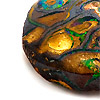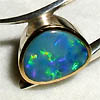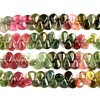- sale
- new items
- lovely beads
- wedding beads
- beads for teens
- for custom order
- newsletter
- recognition
- testimonials
- birthstones
- zodiac signs
- jewelry guide
SHOP BAG
![]() in your bag 0 items
in your bag 0 items
Opal and tourmaline are the gemstones for October.
In a cave in Kenya, Louis Leakey, the famous anthropologist, uncovered the earliest known opal artifacts. Dating back to about 4000 B.C., they most likely came from Ethiopia.
Historically, opal discoveries and mining progressed similarly to the ways diamond, emerald, ruby and sapphire were produced. As early humans found various gemstones, they slowly learned to work them into decorative shapes. As communities developed, gems became symbols of wealth. In the Old World, Hungary mined opal for Europe and the Middle East.
Mexico, Peru, and Honduras supplied their own native empires with the gemstone. Conquistadors introduced New World opal to Spain when they returned with stones in the early sixteenth century.
Since the late 1800's, Australia has dominated opal production with more than ninety per cent of the global output. Opal of differing qualities occurs in more than twenty other countries, including Zambia, Ethiopia, Guatemala, Poland, Peru, Canada, New Zealand, Indonesia, the USA, Brazil, and Mexico. Read more on the history of opal here.
Ancient legend says that tourmaline is found in all colors because it traveled along a rainbow and gathered all the rainbow's colors. For centuries, various cultures have had different beliefs about what virtues the tourmaline can bring to the wearer.
In 18th Century literature, Barbara Walker cites references, which considered this stone to be helpful to artists, authors, actors and those in creative fields. In the same century, a Dutch scientist claimed that a tourmaline wrapped in silk and placed against the cheek of a feverish child would induce sleep. In Africa, tourmaline was once used as a stone to awaken one from "the dream of illusion".
Ancient ceremonies in India included the use of the gem as a tool to bring insight and help in the discovery of that which is good. It would also serve to make known who or what was the cause of troubles or evil deeds. Native Americans have used pink and green tourmaline as funeral gifts for centuries. In modern times, the stone is used by tribes in Africa, Native Americans, and aboriginal groups in Australia as a talisman that protects against all dangers.
In fact, at one time in history, pink and red tourmaline were thought to be rubies. Pink tourmaline tends to be pinker in color than ruby. However, their similarities in appearance are so strong that the stones in the Russian crown jewels believed to be rubies for centuries, are now thought to be tourmalines.





